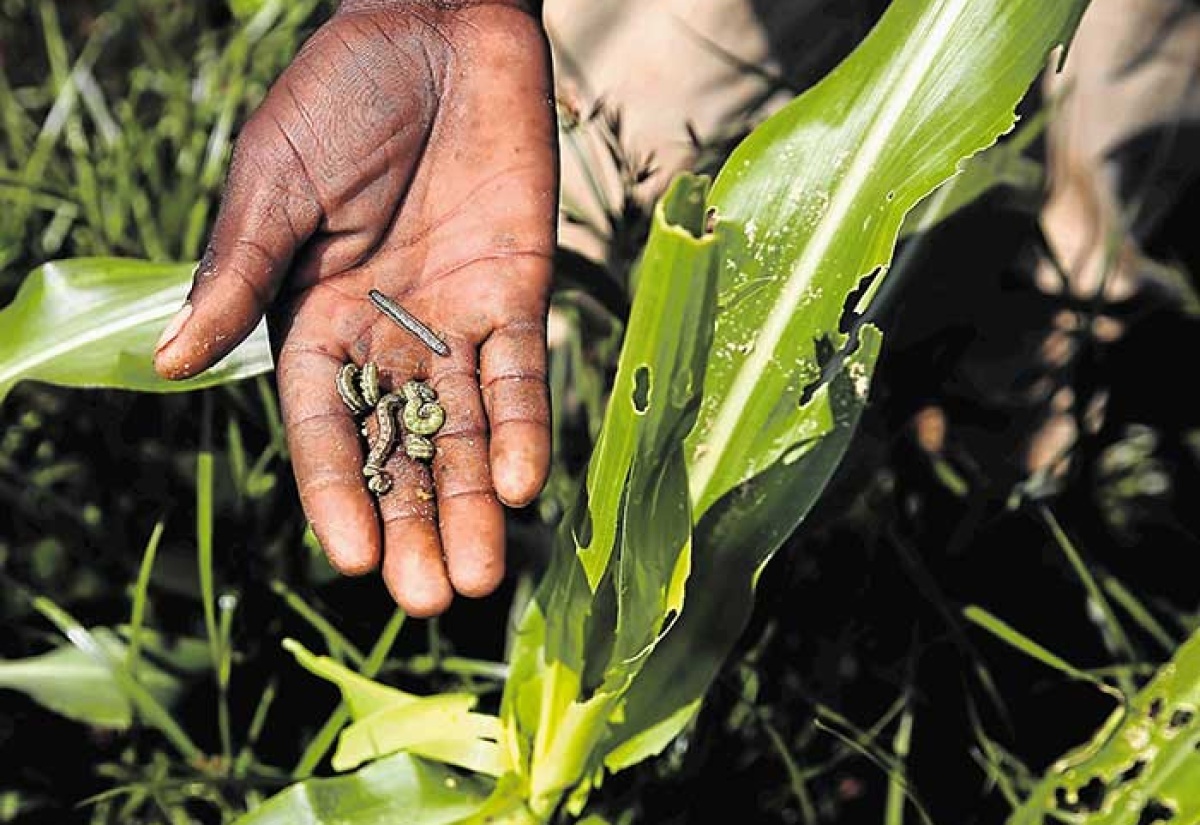Five-Step Strategy to Control Beet Armyworm
By: , March 25, 2024The Full Story
The Rural Agricultural Development Authority (RADA) is recommending a five-step area-wide management (AWM) strategy to control the beet armyworm as the pest population increases locally.
Beet armyworm, which mainly affects onion and scallion, devastated crop production in St. Elizabeth in the 1990s, and there is currently a surge in the population in Heartease, St. Thomas.
Communities such as Albion, Norris, Phillipsfield and Yallahs in the parish are also impacted.
Senior Plant Health and Food Safety Officer at RADA, Francine Webb, tells JIS News that the increase is due to the rise in temperatures in February and into March, which favour the growth and development of the pests.
She is encouraging the AWM approach to effectively control the threat, which entails farmers implementing various strategies at the same time in the affected areas, rather than on individual farms.

The first step in the process is for farmers to be on alert and vigilant in their fields.
“You must expect them. It’s not that they’re not there. So, if you’re not seeing it, you’re going to see increased levels of damage. You’re going to physically see them there on the leaves. If you are not aware, it means that you need to go in and scope, because they are there,” Ms. Webb notes.
She says the next step involves the use of pheromone traps.
“The female gives off a particular scent that attracts males to them. The trap is a monitoring tool and it’s easy to set up and readily available from the RADA office. Farmers should set it up in the field, and what it will do is help monitor the population, particularly for the farmers in Heartease and the surrounding areas,” she points out.
“You must be monitoring your population so that you know what the traps catch, especially the male adults. The presence of male adults is an indication that your population is increasing. The males and the females mate and they lay eggs. It’s an indication that you need to look out now, because eggs are being laid in the field and you have a small window of time,” she says.
The third step in the strategy is administering timely treatments to the field. Worms should be targeted while young because at this stage, they are most susceptible to pesticides.
“What we’re recommending, because you are anticipating the harvest, is the use of products that have a short preharvest interval, which refers to the period of time after you have treated the field to when you can safely harvest. Products such as Phoenix Insecticide, Indox and Cure have relatively short preharvest intervals,” Ms. Webb says.
When using any insecticide or chemical, farmers should use protective gear and apply the correct dosage as directed.
After treating the field, the fourth step in the strategy is to harvest the crop as soon as possible.
“Leaving the onions out in the field means that you are going to incur more damage the longer you have the crop there. Once they are mature and ready, pull them out,” Ms. Webb implores.
The fifth and final step in managing the beet armyworm population involves the proper disposal of plant debris.
“Because worms are in the leaves, if you leave the plant debris in the field, they’re just going to stay there, pupating in the soil until they change into the adult phase and their numbers are still going to increase. What we’re recommending is that you either bury or burn plant debris. The time is dry now so we’re not saying light fires indiscriminately. We are saying containerise the plant debris and burn it,” Ms. Webb says.
While all farmers have a responsibility to manage the pest population within their own fields, Ms. Webb is appealing to farmers to work together to get the numbers down.
“What one farmer does differently is going to impact what is happening within their general area, and so AWM is what we’re encouraging. We can reduce the impact of the beet armyworm, by following those steps,” Ms. Webb tells JIS News.
For details and support farmers can contact their RADA parish offices or call 888-ASK-RADA (888-275-7232).


